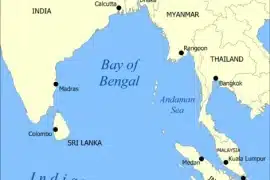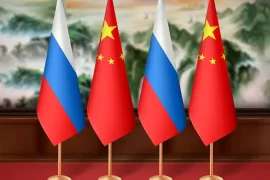In recent years, Taiwan’s strategy to counter China has become a topic of intense scrutiny and debate. Taiwan has found itself in a precarious position as China has ramped up its military activities near the island. China’s repeated incursions into Taiwan’s airspace and waters have tested the island’s ability to defend itself against a potential invasion along its west coast. However, in 2023, China took a significant step by deploying aerial drones that circumvented the entire island. Chinese fighter jets were detected on Taiwan’s east coast. This development has sparked debates among current and former military leaders in Taiwan about how the island should respond to these evolving threats.
Admiral Lee Hsi-Min argues that Taiwan’s reliance on its mountainous terrain as a natural defense is no longer sufficient. He advocates for a shift toward smaller, widely distributed defenses rather than trying to match China’s offensive capabilities. The retired military leader has experience over 40 years of service in Taiwan’s armed forces,
The Role of Taiwan’s East Coast
One key element of Taiwan’s current strategy is an air force base on the island’s east. It has been in operation for over 30 years. Deep mountain bunkers house fighter jets and anti-ship missiles that can be deployed in response to an attack on Taiwan’s main infrastructure in the west. The rationale behind this strategy is to maintain control of the skies, as Taiwan’s military capacity is dwarfed by the People’s Liberation Army of China. The size of the Chinese Army, known as the People’s Liberation Army (PLA), stands at approximately 2,035,000 personnel, while Taiwan’s armed forces have a considerably smaller size, with approximately 169,000 Army personnel.
Taiwan’s primary objective has been to hold the eastern region until assistance arrives from allies, notably the United States. However, experts argue that China’s recent incursions into Taiwan’s east, combined with its military modernization efforts, render this strategy outdated.
The Challenge of A2/AD
The concept of Anti-Access/Area Denial (A2/AD) is crucial to understanding the evolving dynamics in the Taiwan Strait. A2/AD refers to the ability to control access to a military operations zone. It often involves long-range missiles to deter enemy forces from entering an area. China demonstrated a form of A2/AD in 2022 through military exercises simulating a blockade of Taiwan. The excercises included live fire drills and missile launches.

Admiral Lee contends that China would only consider invading Taiwan if it were confident in its A2/AD capabilities to effectively block Taiwan’s eastern region, thereby dissuading potential allies from intervening. To counter this, experts have urged Taiwan to focus on asymmetrical warfare. They emphasize on mobile and civilian capabilities such as portable anti-ship and anti-air missiles, drones, and radar systems. These would pose significant challenges to any invasion attempt.
Allies and Regional Partnerships
While Taiwan is investing in smaller arms and asymmetrical capabilities, it remains dependent on the support of its allies. The United States, in particular, has signaled its willingness to defend Taiwan. New joint military bases in the Philippines offer a strategic advantage, as they are located on the other side of the Bashi channel, a critical access point for both Chinese and U.S. navies. These bases could house systems like HIMARS, which could reach the south of Taiwan, allowing remote retaliation against a Chinese invasion.
Taiwan’s Defensive Advantages
Taiwan’s unique geographic position presents some advantages in the event of an invasion attempt. Unlike the ground-based conflict in Ukraine, Taiwan would involve a maritime battle. It will also allow the island to create a denial zone to block the Chinese force from entering the eastern side of Taiwan. To achieve this, Taiwan is investing in larger defensive systems such as the Patriot missile system and Phalanx, a cannon used to intercept incoming threats.
The Message to China
Taiwan’s Defense Ministry has emphasized that, in the event of a conflict, there will be no clear distinction between the front lines and the rear. It highlights the island’s determination to defend itself. Taiwan’s military conducts regular war games and exercises to showcase its ability to resist any aggression.
In conclusion, Taiwan’s strategy to counter China is at a critical juncture. The island must adapt to evolving threats and focus on asymmetrical warfare. It also has to leverage regional partnerships to enhance its defense capabilities. Taiwan aims to send a clear message to China that any attempt to invade will come at a high cost. Both in terms of casualties and the potential for failure. Ultimately, the best-case scenario for all parties involved is to avoid any armed conflict.







